All the hidden details you missed in King Charles' first official portrait since his coronation
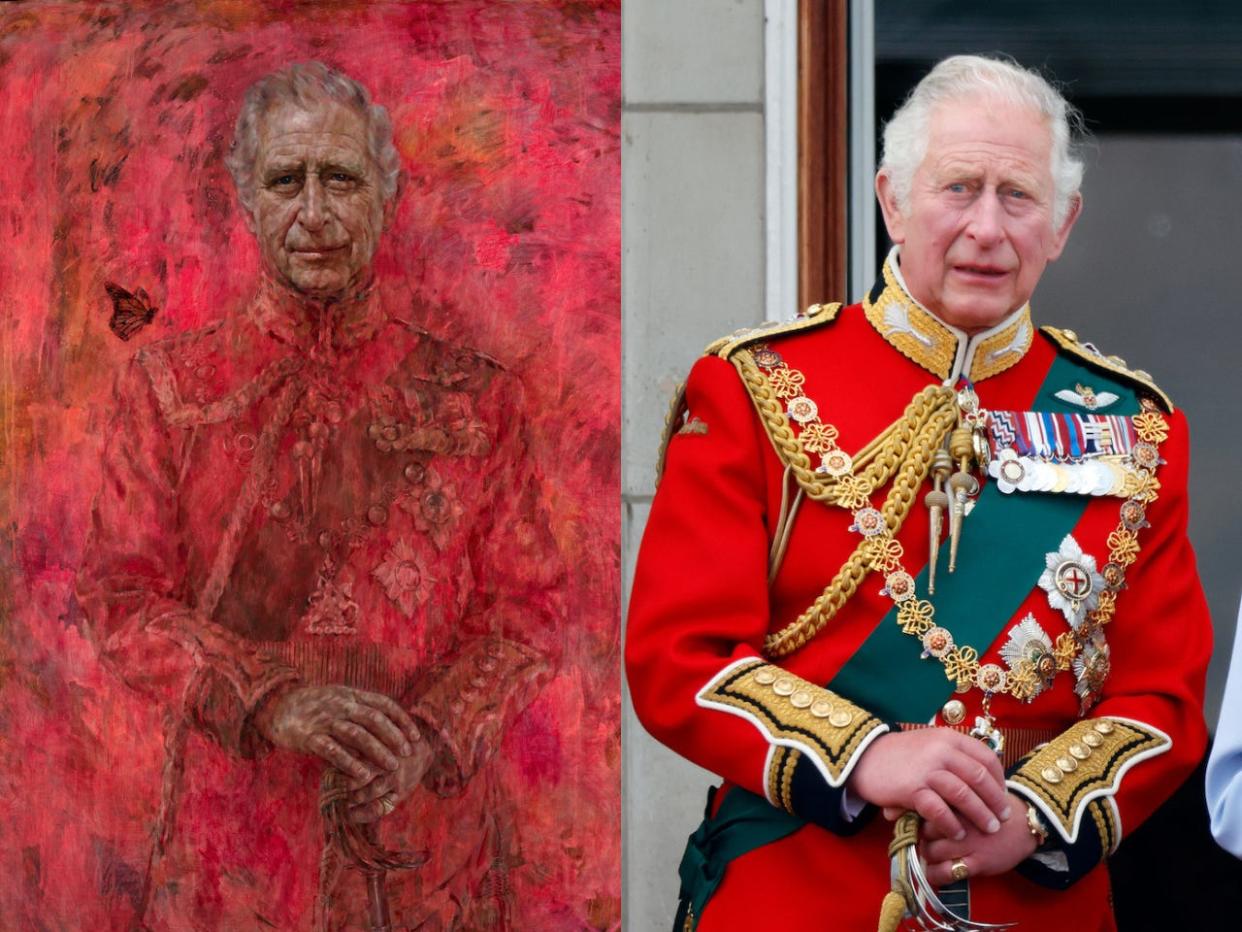
- Oops!Something went wrong.Please try again later.
- Oops!Something went wrong.Please try again later.
The first official portrait of King Charles III since his coronation was unveiled on Tuesday.
Painted by British artist Jonathan Yeo, it portrays Charles against a sea of red brushstrokes.
The portrait has several subtle references to the king's passions and royal lineage.
The first official portrait of King Charles III was released on Tuesday — just over a year after his coronation on May 6, 2023.
The portrait, painted by British artist Jonathan Yeo, was unveiled by the king at Buckingham Palace. According to a palace release shared with Business Insider, it was first commissioned in 2020 to "celebrate" Charles' 50 years as a member of The Drapers Company, a UK charity that supports causes including education, prisoner rehabilitation, and elder care.
Yeo and Charles met four times between 2021 and 2023 at the kings' residences in Highgrove and Clarence House to complete the painting, which will eventually be hung at Drapers' Hall in London.
Steeped in shades of red, the portrait threw Charles for a bit of a loop when he first saw it in its "half-done state," Yeo told the BBC Tuesday.
"He was initially mildly surprised by the strong colour, but otherwise he seemed to be smiling approvingly," he added.
Soon after its debut, the portrait stirred up debate on social media, dividing royal fans into those who enjoy the piece and those who are less appreciative of the artistic direction.
Yeo's creation hasn't been a resounding success in the art world, either. The Washington Post's art critic called it a "stylistic mess," while an artist and faculty member at the Rhode Island School of Design told Today its red brushstrokes remind him of dripping "blood."
However, the work of art got the seal of approval from one of the most important people in Charles' life: Queen Camilla.
According to the BBC, Camilla reacted to seeing it for the first time by saying: "Yes, you've got him."
Like most official royal paintings, Yeo's interpretation of Charles contains several hidden details and subtle nods to the monarch's role as the head of state in the UK, his royal lineage, and his personal passions.
Here's a look at some details that are easy to miss at first glance.
Charles' bright red uniform is from the Welsh Guards, a regiment of the British army.
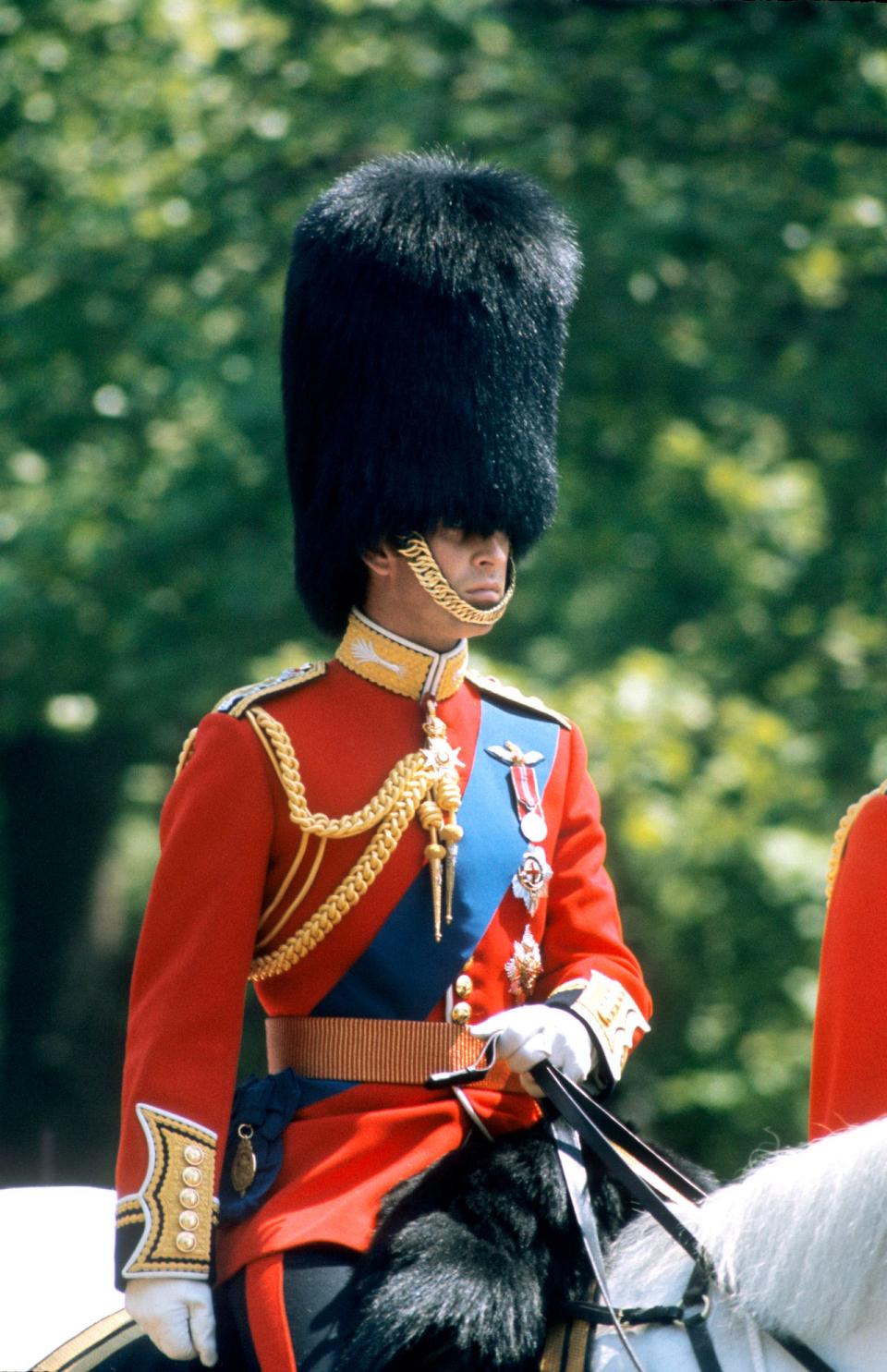
Charles is depicted holding a sword and wearing the ruby-red signature uniform of the Welsh Guards, a regiment of the British army that he was named Regimental Colonel of in 1975.
The king has worn the uniform during the annual Trooping the Colour ceremony, which honors the monarch's birthday at the Horse Guards Parade in London.
The use of red in the uniform and the rest of the painting is a nod to Charles' "royal heritage," as the color often appears in many historical royal paintings, according to Yeo's website, where he offered further insights into his artistic choices.
His uniform fades into the background of the red-painted canvas on purpose.
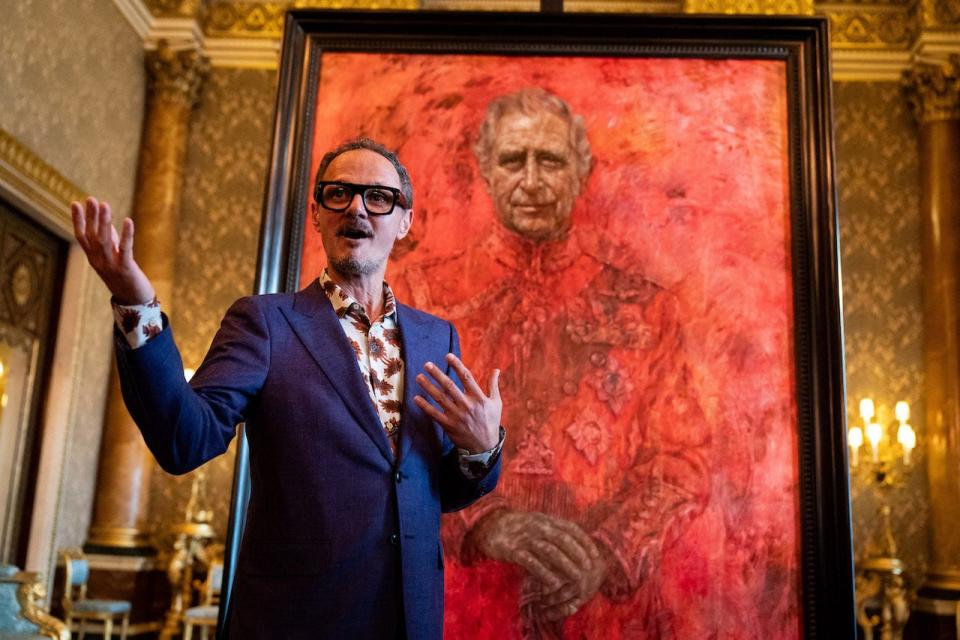
Yeo also explained on his website that Charles' red uniform purposefully blends into the swirls of red paint that cover most of the canvas.
He chose to fade the uniform out and keep Charles' face more pronounced to allow viewers to feel a sense of connection with the king as a person rather than have their attention diverted by his regalia.
"As a portrait artist, you get this unique opportunity to spend time with and get to know a subject, so I wanted to minimise the visual distractions and allow people to connect with the human being underneath," Yeo said.
The butterfly next to Charles' shoulder is thought to have been named after another British ruler.
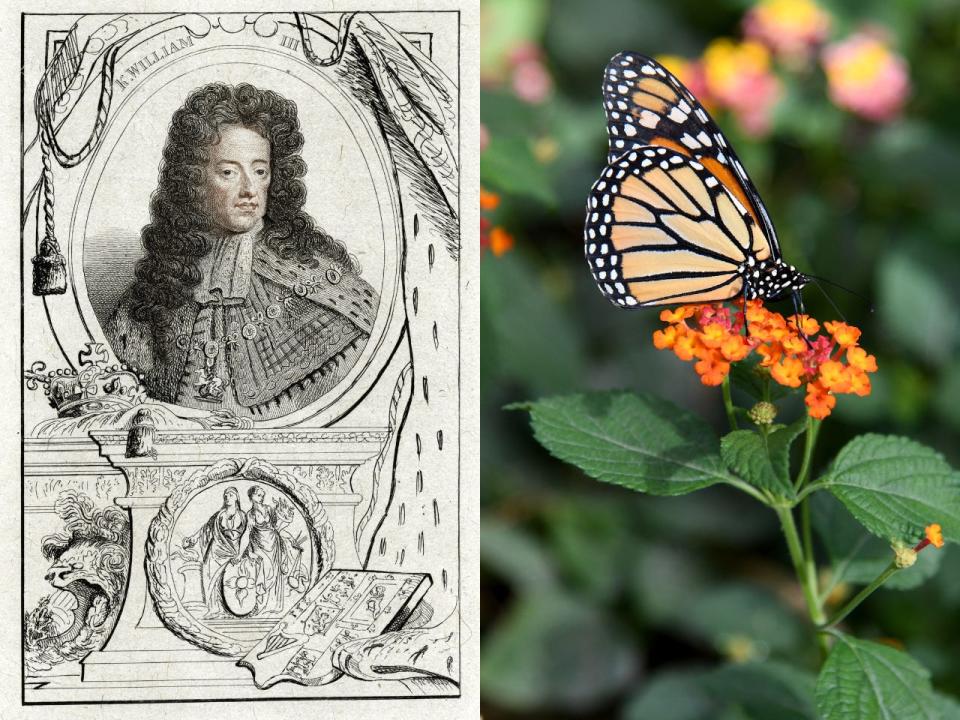
In the portrait, a small butterfly flutters above Charles' right shoulder.
Yeo said on this website that the butterfly is symbolic for several reasons.
For one, it is a monarch butterfly, identifiable for its orange, black, and white colors.
As Yeo explained on his website, it's commonly believed that the monarch butterfly got its name from King William III, who was born in the Netherlands and known as the Prince of Orange until he ascended the throne in England.
Speaking to the BBC, the artist also revealed that it was Charles who suggested adding the butterfly. Yeo apparently asked the king: "When schoolchildren are looking at this in 200 years and they're looking at the who's who of the monarchs, what clues can you give them?"
According to Yeo, Charles's response was: "What about a butterfly landing on my shoulder?"
The butterfly is also a subtle nod to Charles' longtime passion for environmental causes.
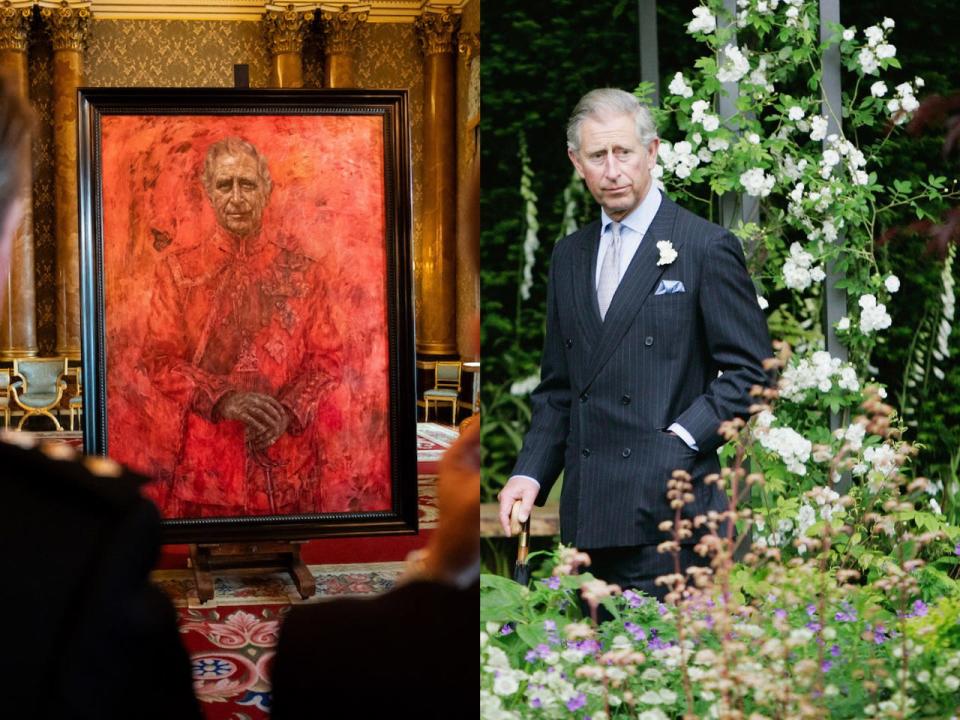
Charles has championed sustainability and environmental protections for decades, long before he was imploring governments and businesses to take more action to combat the climate crisis at events like the G-7 summit and COP26.
In 1970, for example, he gave a highly progressive speech for the time about the consequences of pollution on the environment, which he said in an interview with ITV News in 2020 made many people think he was "dotty."
The butterfly pays tribute to Charles' passion for the environment, Yeo said on his website.
"Primarily a symbol of the beauty and precariousness of nature, it highlights the environmental causes the King has championed most of his life and certainly long before they became a mainstream conversation," Yeo wrote.
The butterfly is also symbolic of Charles' evolution from prince to king.
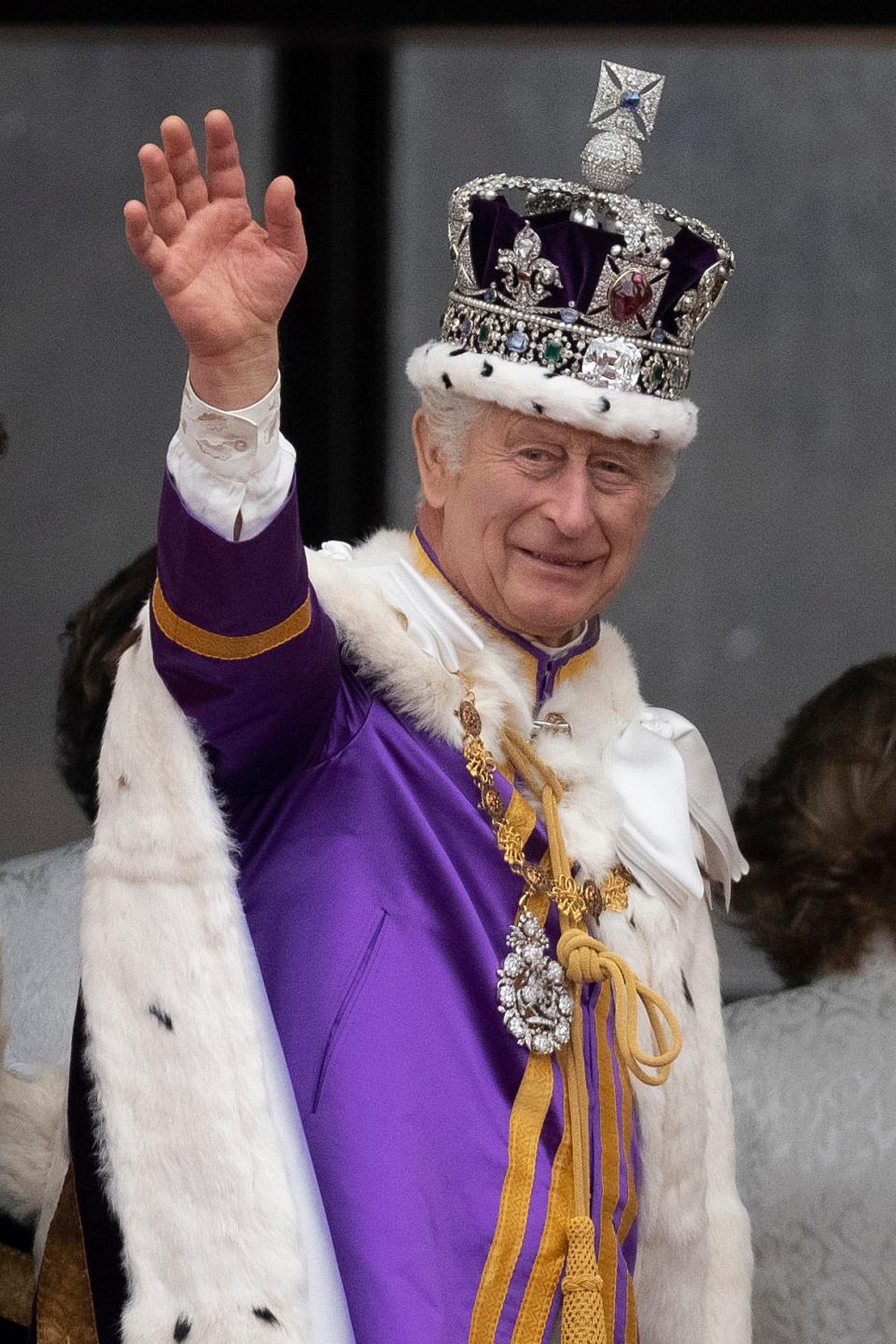
Just as a caterpillar builds a cocoon and transforms into a butterfly, Charles went through a transitional period of his own while Yeo was working on this painting.
Charles was known as the Prince of Wales when Yeo started on the portrait. By the time it was complete, he was king.
"In the context of art history, a butterfly is often the symbol of metamorphosis and rebirth, and thus also parallels the King's transition from prince to monarch during the period the portrait was created," Yeo wrote on his website.
Read the original article on Business Insider

